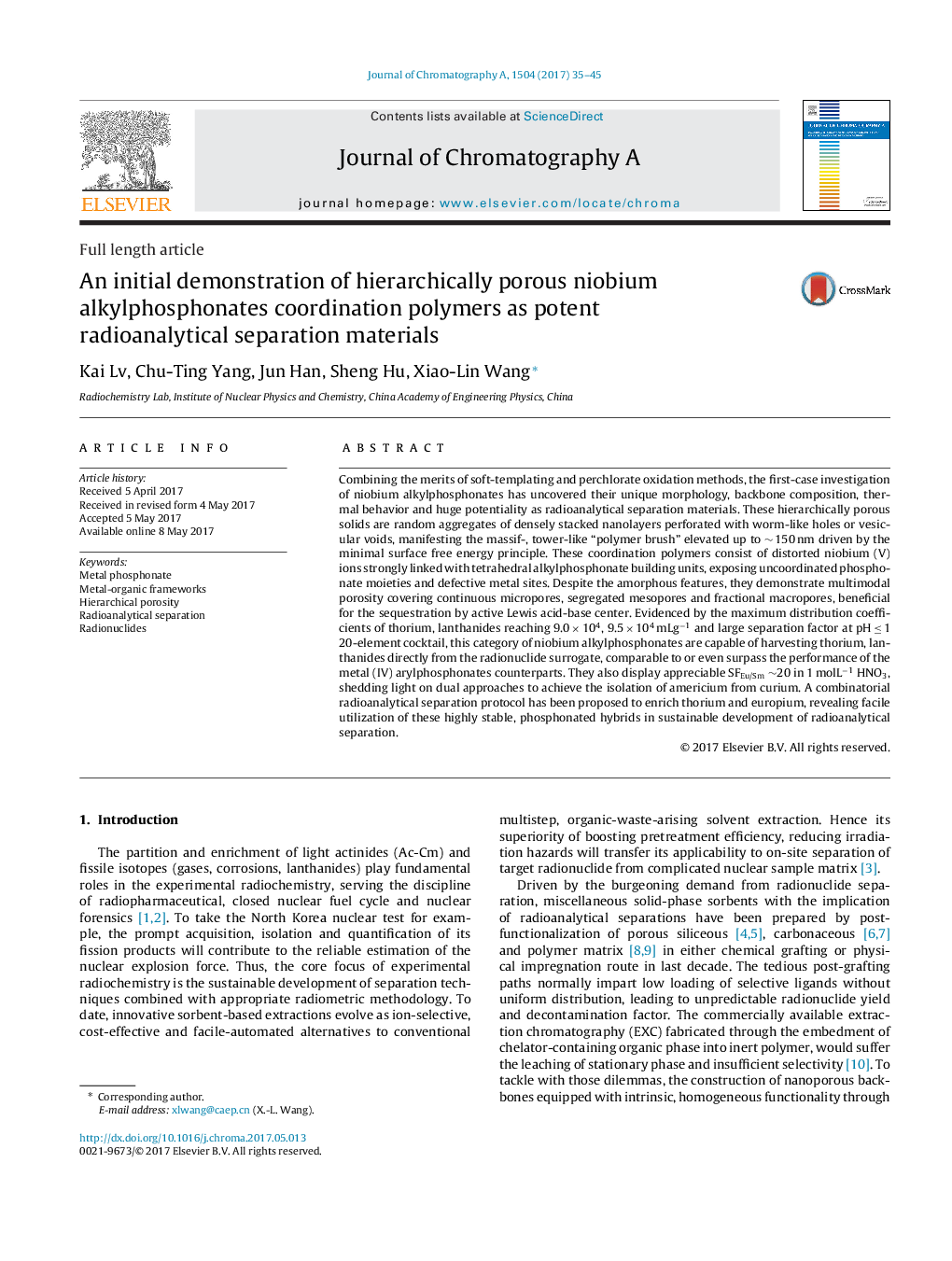| Article ID | Journal | Published Year | Pages | File Type |
|---|---|---|---|---|
| 5135194 | Journal of Chromatography A | 2017 | 11 Pages |
â¢The rare occurrence of niobium alkylphosphonates as radionuclide scavengers was initiated.â¢The hierarchically porous features and inherent phosphonate functionality were explored.â¢The competitive radionuclide sequestration was performed in acidic cocktail surrogates.â¢The distinctive uptake profiles could be utilized for facile radioanalytical separation.
Combining the merits of soft-templating and perchlorate oxidation methods, the first-case investigation of niobium alkylphosphonates has uncovered their unique morphology, backbone composition, thermal behavior and huge potentiality as radioanalytical separation materials. These hierarchically porous solids are random aggregates of densely stacked nanolayers perforated with worm-like holes or vesicular voids, manifesting the massif-, tower-like “polymer brush” elevated up to â¼Â 150 nm driven by the minimal surface free energy principle. These coordination polymers consist of distorted niobium (V) ions strongly linked with tetrahedral alkylphosphonate building units, exposing uncoordinated phosphonate moieties and defective metal sites. Despite the amorphous features, they demonstrate multimodal porosity covering continuous micropores, segregated mesopores and fractional macropores, beneficial for the sequestration by active Lewis acid-base center. Evidenced by the maximum distribution coefficients of thorium, lanthanides reaching 9.0 Ã 104, 9.5 Ã 104 mLgâ1 and large separation factor at pH â¤Â 1 20-element cocktail, this category of niobium alkylphosphonates are capable of harvesting thorium, lanthanides directly from the radionuclide surrogate, comparable to or even surpass the performance of the metal (IV) arylphosphonates counterparts. They also display appreciable SFEu/Sm â¼20 in 1 molLâ1 HNO3, shedding light on dual approaches to achieve the isolation of americium from curium. A combinatorial radioanalytical separation protocol has been proposed to enrich thorium and europium, revealing facile utilization of these highly stable, phosphonated hybrids in sustainable development of radioanalytical separation.
